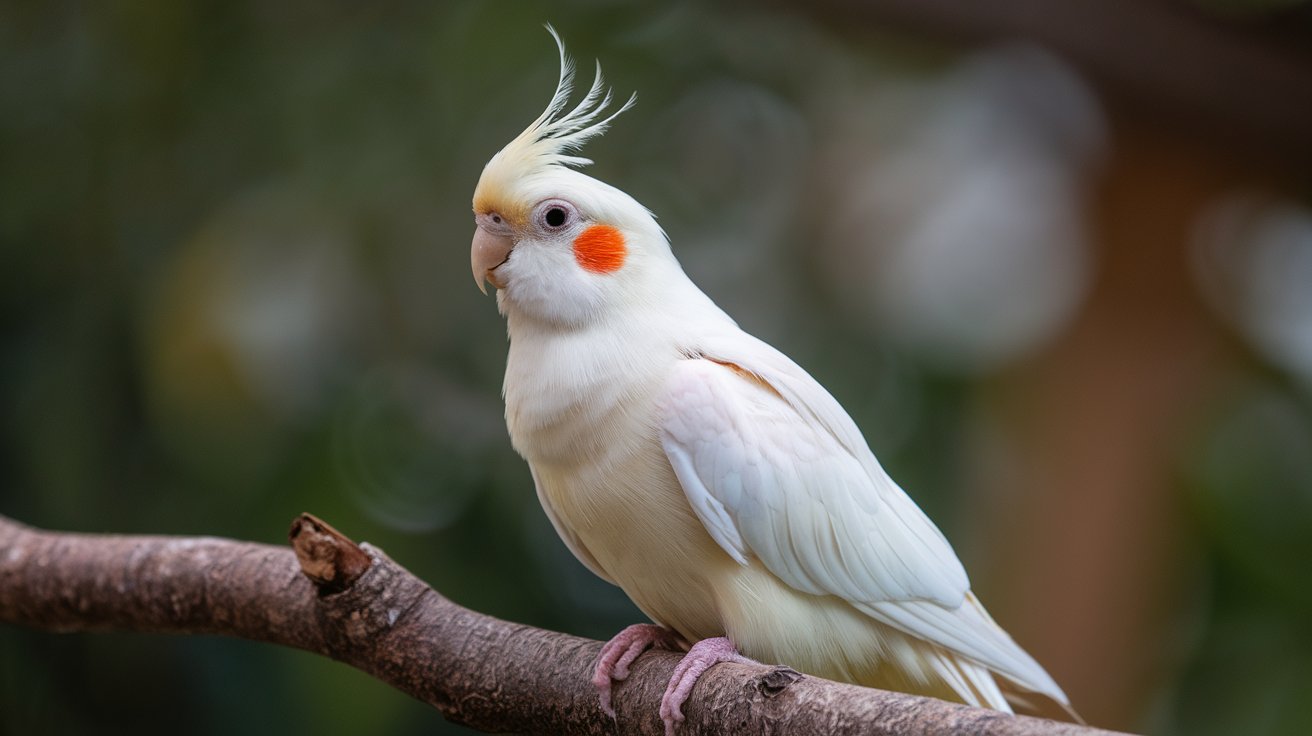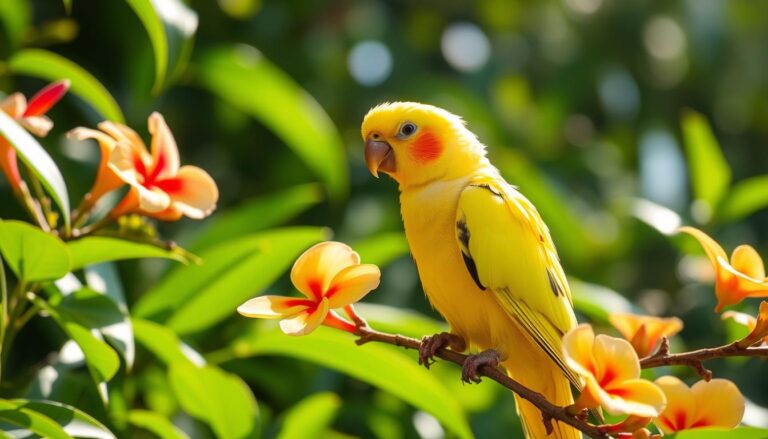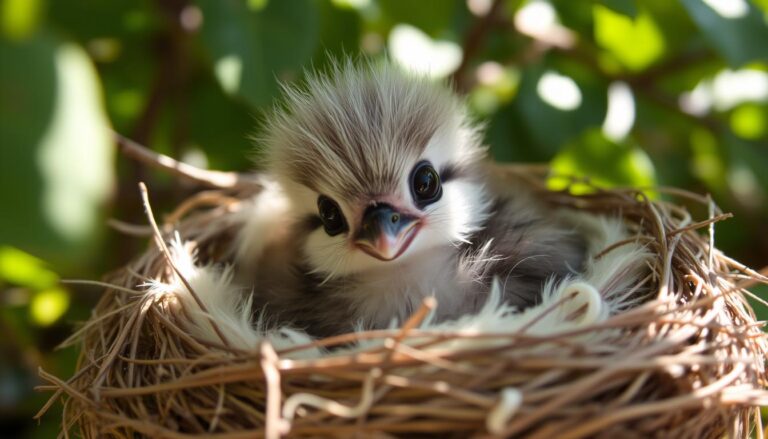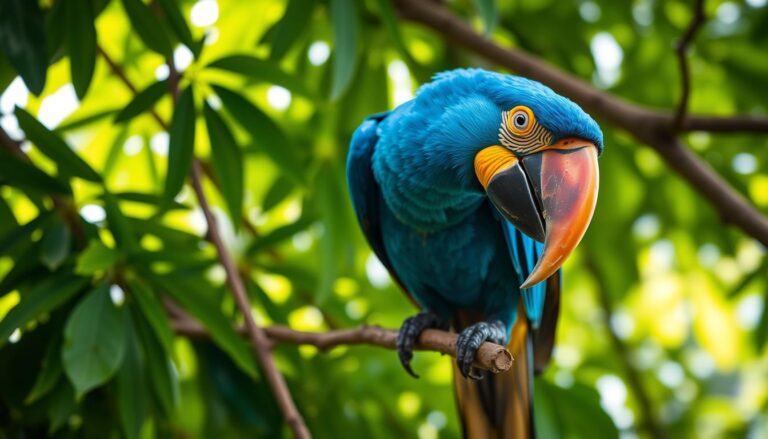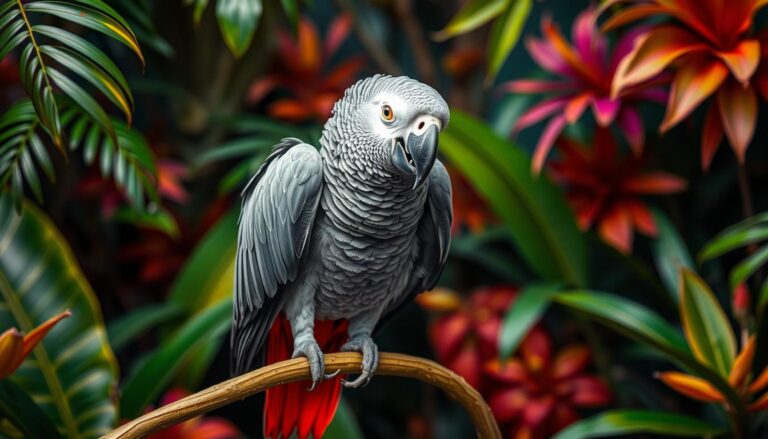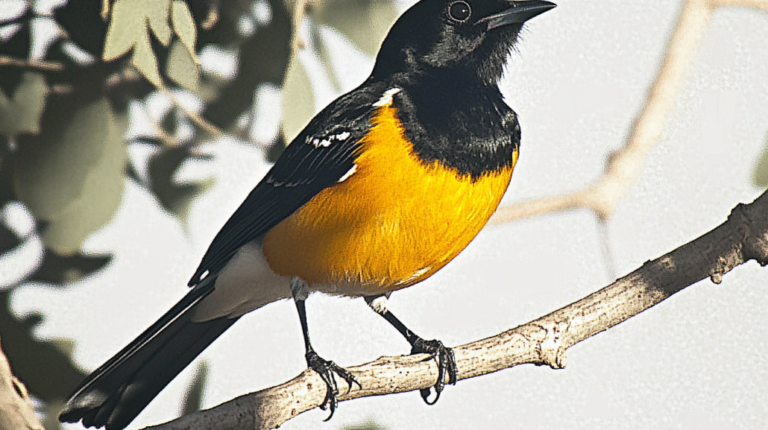Whiteface Lutino Cockatiel: 7 Amazing & Heartwarming Tips
Introduction
There’s something magically uplifting about welcoming a parrot into your home, especially one that seems to glow with sunny feathers and sports a captivating, pure-white face. You may have already encountered descriptions of the whiteface lutino cockatiel online or at a local pet store—an endearing, head-turning bird that sparks curiosity. With its bold yet soft yellowish plumage and a pristine white crest, this friendly companion is often called “the best of both worlds,” blending the eye-catching coloration of the lutino mutation with the gentle softness of the whiteface variety.
In this thorough guide, you’ll discover the ins and outs of owning and caring for a whiteface lutino cockatiel. We’ll delve into its origins, physical traits, personality quirks, and best practices for nutrition, housing, and training. If you’ve ever wondered how the whiteface lutino cockatiel differs from standard lutinos or gray cockatiels, or you’re simply keen to learn more about providing the best life for these feathery friends, you’re in the right place. Let’s embark on an enlightening journey to explore everything you need to know about this remarkable mutation of an already beloved pet bird.
The Fascinating World of Cockatiel Mutations
Understanding Cockatiel Genetics
When you look at a whiteface lutino cockatiel, you’re seeing the result of fascinating genetics that cause specific coloration traits. Cockatiels (Nymphicus hollandicus) originate from Australia, and the “wild type” (gray) was the only coloration in nature. Over time, breeders noticed certain color variations and selectively bred cockatiels to produce stable mutations like lutino, whiteface, cinnamon, and more.
- Lutino: Typically has an all-yellow or cream body and lacks the gray pigment, though the birds still display orange cheek patches unless combined with other mutations.
- Whiteface: Characterized by the absence of yellow or orange coloration in the face area, giving the bird a striking white visage.
- whiteface lutino cockatiel: A combination of both these genetic traits, where the cheek patches and facial colors are absent, but the bird retains the luminous qualities of a lutino’s body plumage.
According to the American Federation of Aviculture, cockatiel color mutations do not typically affect health or temperament in a negative way, although responsible breeding and proper care remain crucial for the well-being of any pet bird.
Why Cockatiels Are So Popular
Cockatiels rank among the top pet birds in the United States, and it’s no mystery why. They’re smaller than many parrot species, making them more manageable for families, and they possess friendly, affectionate personalities. A whiteface lutino cockatiel brings all these positive qualities to the table—plus that enviable pale glow that turns heads. Cockatiels in general are known for:
- Gentle Temperament: Ideal as a first bird for many enthusiasts.
- Trainability: They can learn to whistle tunes and mimic some sounds.
- Playfulness: You’ll love watching them explore new toys, especially mirrors or swing perches.
Identifying a Whiteface Lutino Cockatiel
Physical Appearance
A whiteface lutino cockatiel is often described as a “tuxedo bird dipped in sunshine.” While that might sound whimsical, there’s truth behind it:
- Facial Features: The whiteface trait erases the yellow and orange pigment in the face, so you’ll see an almost entirely white face and crest.
- Body Color: The lutino component yields a bright, creamy yellow hue across most of the body—some birds appear more lemony, while others have a soft pastel tint.
- Crest: One of the most endearing features is the high, spiky crest, which may look pure white when the bird is a true whiteface lutino cockatiel.
Because these birds don’t have the standard cockatiel cheek patches, they can look subtler or more “angelic” than their colored-cheek counterparts. Their leg and toenail coloration often tends toward pinkish or light shades rather than the dark tones found in gray cockatiels.
Are They Truly Rare?
Within the broader scope of cockatiel mutations, the whiteface lutino cockatiel is somewhat less common than standard lutinos or grays. However, they’ve become more accessible thanks to dedicated breeders and rising popularity among enthusiasts seeking a unique pet. When you search for a whiteface lutino cockatiel at bird expos or reputable breeders, you might need to be patient. Rest assured, the wait is usually worth it for this eye-catching companion.
Personality and Behavior
Loving Companionship
If you’re looking for a bond with your pet bird, the whiteface lutino cockatiel rarely disappoints. Cockatiels are famously affectionate, and a well-socialized whiteface lutino cockatiel is no exception. These birds thrive on gentle handling, head scratches, and interaction with their human family.
Some owners report that their whiteface lutino cockatiel is especially cuddly and even follows them from room to room, chirping for attention. While each bird has its own personality, you can typically expect:
- Friendly Disposition: Many enjoy perching on your shoulder or hand.
- Curiosity: They love to explore or investigate new objects in their environment.
- Moderate Vocalizations: Males often whistle more than females, but each bird varies.
Social Needs
A whiteface lutino cockatiel, like all cockatiels, is a flock-oriented creature. In the wild, these parrots live in groups, so isolation can lead to loneliness. You can keep a single cockatiel happy as long as you offer ample social engagement, such as talking, playing, and whistling to your bird. If you’re away from home for many hours a day, consider:
- Placing the Cage in a High-Traffic Area: So the bird sees household activity.
- Providing a Companion: Another cockatiel or compatible bird.
- Daily Interaction: Short, frequent sessions of play and chatter can go a long way.
When you prioritize your whiteface lutino cockatiel’s social well-being, you’re likely to see fewer behavioral issues like incessant screeching or feather plucking.
Optimal Housing and Setup
Cage Dimensions and Features
A whiteface lutino cockatiel may be small, but it still needs adequate space to spread its wings and hop around. Aim for a cage that’s at least 24 inches wide by 18 inches deep by 24 inches tall, though bigger is always better. Make sure the bar spacing is about 1/2 inch to 5/8 inch, so your bird can’t stick its head through.
Recommended Cage Essentials:
- Multiple perches of varying thickness and material (e.g., natural wood and rope).
- Food and water dishes placed away from perches to reduce waste contamination.
- A few chew toys or puzzle toys to keep your whiteface lutino cockatiel mentally stimulated.
- A bird-safe swing for some added fun.
Creating a Comfortable Environment
Beyond just the cage, ensure the environment around your whiteface lutino cockatiel is friendly and secure. Keep the room temperature in the comfortable range of 65–80°F (18–27°C). Avoid placing the cage near drafts, direct sunlight, or noisy appliances like televisions or blenders.
Additional Tips:
- Provide a dimming light or cage cover to mimic dusk and help regulate sleep.
- Clean the cage bottom regularly to prevent bacteria buildup.
- Rotate toys weekly to maintain interest.
Diet and Nutrition for a Healthy Whiteface Lutino Cockatiel
The Core Diet
According to the Association of Avian Veterinarians (AAV), a balanced diet is critical to a cockatiel’s well-being. A high-quality pellet (formulated for small parrots) should form the foundation of your whiteface lutino cockatiel’s meals, constituting around 60–70% of its diet. Pelleted diets ensure your bird receives essential vitamins and minerals without the selective feeding that sometimes happens with seed mixes.
Seeds, Veggies, and Treats
While pellets are vital, variety is the spice of a cockatiel’s life. A small portion (about 20–30%) of your bird’s daily intake can include seed mixes, which often contain millet, sunflower seeds, and oats. Fresh vegetables and fruits also play an important role:
- Veggies: Spinach, kale, carrots, broccoli, peas
- Fruits: Apple slices (seedless), berries, melon
Offer these in moderation to avoid spoilage and keep mealtime engaging. Occasionally, you can reward your whiteface lutino cockatiel with healthy treats, such as a small bit of boiled egg or millet spray. Just remember that treats should never exceed 10% of the total diet, so your bird stays fit and avoids obesity.
Fresh Water
A whiteface lutino cockatiel needs daily access to clean, fresh water. Wash bowls or water bottles daily, and consider a separate container for bathing if your bird enjoys a little splash from time to time. Hydration is especially important if you live in a dry climate or use indoor heating and cooling systems.
Common Health Concerns
Signs of a Healthy Bird
A whiteface lutino cockatiel generally has the same health profile as any other cockatiel mutation. A robust bird will display:
- Bright, alert eyes
- Smooth, clean feathers
- An active, inquisitive demeanor
- Steady eating and droppings
Regular checkups with an avian vet are essential, ideally once a year, to ensure there are no underlying issues.
Potential Problems
Even the best-cared-for whiteface lutino cockatiel can face health hiccups. Watch for:
- Respiratory Issues: Sneezing, nasal discharge, or labored breathing can indicate an infection.
- Feather Plucking: Might stem from stress, boredom, or underlying medical conditions.
- Nutritional Deficiencies: Lacking vital nutrients can lead to poor feather quality or lethargy.
Should you notice any symptoms, consult an avian veterinarian immediately. Quick intervention can make all the difference in restoring your whiteface lutino cockatiel to good health.
Grooming and Maintenance
Feather Care
Proper grooming not only keeps your whiteface lutino cockatiel looking fabulous, but it also ensures comfort. Birds can be prone to dander, especially mutations with lighter plumage like the whiteface lutino cockatiel. Provide regular bathing opportunities—such as a shallow bowl of lukewarm water or a gentle mist spray.
Note: Cockatiels preen themselves naturally, but you can help by placing a small bird-safe bath in the cage. If your cockatiel is shy around water, introduce bathing gradually and with positive reinforcement.
Nail Trims and Wing Management
Nails can grow long and potentially snag on cage bars or fabric. If you aren’t comfortable trimming nails yourself, seek an avian vet’s help. Some owners also opt for partial wing trimming to prevent accidental escapes, though opinions vary on whether to keep cockatiels fully flighted or not. Regardless of your choice, ensure it’s done safely and ethically.
Temperament and Training Techniques
Positive Reinforcement
Cockatiels are generally eager to interact. The whiteface lutino cockatiel is no different and will respond well to positive reinforcement. Rather than scolding or punishing your bird for undesired behavior, reward it with a small treat, verbal praise, or gentle petting whenever it does something good—like stepping onto your hand or whistling on cue.
Training Tips:
- Start with step-up commands (using a perch or your finger).
- Offer verbal praise immediately when your whiteface lutino cockatiel obeys.
- Keep sessions short, about 10–15 minutes, to match the bird’s attention span.
Handling Fear and Nippiness
A new or nervous whiteface lutino cockatiel might hiss, back away, or even give a light nip. This is typically a sign of fear, not aggression. Move slowly, speak softly, and give your bird space to become accustomed to your presence. Over time, consistent gentle interactions build trust, reducing fear-based behaviors.
Enrichment and Entertainment
Toys and Activities
Like all parrots, a whiteface lutino cockatiel needs mental and physical stimulation. Boredom can lead to destructive behaviors, stress, or depression. Provide:
- Chew Toys: Bird-safe wood or cardboard is ideal.
- Foraging Toys: Hide treats to challenge their problem-solving skills.
- Mirrors (If single-housed): Some cockatiels enjoy whistling at their own reflections, though watch for over-bonding or aggression toward the mirror.
The Importance of Exercise
A whiteface lutino cockatiel may look delicate, but it benefits greatly from daily flight time in a safe, enclosed room. If your bird’s wings are trimmed, supervised out-of-cage time still allows it to hop, climb, and stretch. Encouraging movement with climbing nets, play stands, or simply a short game of “chase the toy” can boost overall health and mental sharpness.
Breeding the Whiteface Lutino Cockatiel
Ethical Considerations
Before you decide to breed any bird, including a whiteface lutino cockatiel, weigh the responsibilities. Breeding requires careful planning, a proper setup, and sometimes a financial investment to ensure healthy offspring. Overbreeding or irresponsible pairing can lead to genetic issues, so always consult with experienced breeders or avian veterinarians.
Setting Up a Breeding Environment
If you have a compatible pair—a whiteface lutino cockatiel male and a whiteface lutino cockatiel female or a lutino female who carries the whiteface gene—here’s what you’ll need:
- Roomy Cage or Aviary: Provide enough space for both adults, plus a nest box.
- Nest Box: A wooden or plastic box lined with safe nesting material like pine shavings.
- Nutrient-Rich Diet: Increase protein and calcium to support egg-laying and chick development.
Monitor the female’s health closely for signs of egg binding or nutritional deficiency. Once the eggs hatch, you’ll need to keep the area quiet, maintain cleanliness, and possibly offer hand-feeding assistance if the parents struggle.
Comparing Whiteface Lutino to Other Cockatiel Mutations
Here’s a quick reference table to see how the whiteface lutino cockatiel stacks up against other popular mutations:
| Mutation | Facial Color | Body Color | Cheek Patches | Commonness |
|---|---|---|---|---|
| Standard Gray | Gray or light face | Predominantly gray | Orange | Very common |
| Lutino | Yellow/cream | Yellow or cream | Orange | Common |
| Whiteface | White | Gray or white shading | Absent | Moderately common |
| Whiteface Lutino | White | Pale yellow or cream | Absent | Less common |
| Cinnamon | Light brownish-gray face | Brownish-gray body | Orange | Common |
| Pearl | Yellow or white pattern | Mottled or pearled spots | Typically orange, but can vary | Fairly common |
As you can see, the whiteface lutino cockatiel stands out thanks to that vivid body coloration paired with a lack of orange cheek patches, a trait it shares with standard whiteface varieties.
Practical Tips for a Harmonious Home
- Vet Visits: Schedule an initial exam soon after bringing your whiteface lutino cockatiel home.
- Safe Socialization: Introduce your bird slowly to family members and any other pets.
- Feather-Friendly Home: Avoid toxic fumes from non-stick cookware, cigarettes, or aerosol sprays near your cockatiel.
- Consistency: Cockatiels appreciate a routine—regular mealtimes, bedtime, and interaction windows help them feel secure.
- Keep Learning: Explore resources like [INTERNAL LINK 2] for more detailed insights on advanced cockatiel care.
If you want additional reading on standard lutino cockatiel care (a close cousin of the whiteface lutino cockatiel), check out this helpful resource. Learning about general lutinos can also deepen your understanding of the whiteface lutino mutation.
Potential Challenges and Solutions
Noise Levels
A whiteface lutino cockatiel, like any cockatiel, can be vocal. Although they’re not as loud as some larger parrots, they may still whine or whistle for attention. If noise becomes overwhelming:
- Try to identify triggers (lack of interaction, hunger, boredom).
- Provide more enrichment or daily training sessions.
- Use gentle voice cues like “All done” to signal you’re not ignoring them forever, just momentarily unavailable.
Mess and Cleanup
Birds are known to scatter seed hulls, feathers, and dander. A whiteface lutino cockatiel, with its lighter plumage, might produce noticeable white down feathers. Frequent cage cleaning, using a handheld vacuum for fallen debris, and placing a mat under the cage helps control mess.
Health Emergencies
No matter how careful you are, emergencies can arise. If your whiteface lutino cockatiel suddenly stops eating, has difficulty breathing, or displays unusual behavior (like sitting at the cage bottom for long periods), seek veterinary care promptly. Early intervention often leads to better outcomes.
FAQs
What is the white face cockatiel mutation?
A whiteface lutino cockatiel combines the absence of cheek colors with bright, creamy plumage. This mutation removes orange cheek patches and yellow facial tones. The result is a distinctive and beautiful look.
Are white face cockatiels rare compared to others?
A whiteface lutino cockatiel is generally less common than standard varieties. It takes dedicated breeders to produce healthy specimens with consistent coloring. Many enthusiasts find the wait worthwhile for this stunning mutation.
Does the white face mutation affect personality?
A whiteface lutino cockatiel shares the gentle, friendly temperament of standard cockatiels. Color mutations rarely change behavior or temperament. Each bird’s personality depends more on socialization than feather color.
Do white face cockatiels require special care?
A whiteface lutino cockatiel generally needs the same care as other cockatiels. Offer a balanced diet, enough space, and social interaction. Regular vet checks ensure any genetic concerns are addressed early.
Can you breed for a whiteface lutino mutation easily?
Breeding a whiteface lutino cockatiel requires both the whiteface and lutino genes. Proper pairing and responsible breeding are key. Always consult experienced breeders or an avian vet before starting.
How do I know if my bird is a whiteface lutino cockatiel?
A whiteface lutino cockatiel has a bright, nearly all-yellow body and a pure white face without orange patches. The crest is white, and the legs are often pinkish. Genetic testing or expert evaluation can confirm the mutation.
Conclusion
In the colorful universe of cockatiel mutations, the whiteface lutino cockatiel stands as an especially enchanting blend of creamy hues and a radiant white face. Its beauty, however, is only part of the story. Equally impressive are its affectionate personality, playful nature, and generally easy-going attitude, making it a superb companion for families, singles, and seniors alike.
Caring for a whiteface lutino cockatiel involves consistent attention to diet, housing, and social needs, but the reward is a loving, interactive pet that brightens your day with every chirp. By focusing on proper nutrition, regular checkups, and daily enrichment, you can cultivate a bond that lasts for years. We’d love to hear about your experiences, so please feel free to share your whiteface lutino cockatiel stories or questions in the comments!
If you want to understand the standard lutino’s care and how it relates to the whiteface lutino cockatiel, check out this article on lutino cockatiel care.
For a wealth of research-based information on bird care, you can visit the Cornell Lab of Ornithology, which offers extensive resources on avian health, behavior, and conservation.

